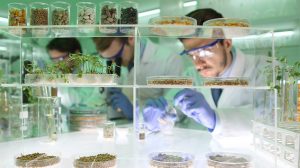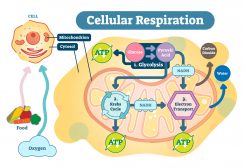Definition
noun, plural: dipeptides
An organic compound formed when two amino acids are joined by a peptide bond
Supplement
A dipeptide is one of the many types of peptides. Peptides are organic molecules comprised of amino acid monomers that are joined together by a peptide bond. The bond forms between the carboxyl group of one amino acid and the amino group of another. Peptides may be classified according to the number of amino acid monomers existing in a molecule. Examples of peptides include the dipeptides, which are comprised of two amino acid monomers, tripeptides, which are made up of three amino acid monomers, tetrapeptides that are made up of four amino acid monomers, and so on. A polypeptide is a type of peptide that is comprised of long, unbranched chain of amino acid monomers.
Dipeptides are usually derived from polypeptides cleaved by a particular peptidase (i.e. dipeptidyl peptidase, a hydrolase enzyme). Dipeptides are found to stimulate the release of gastrin from G-cells in stomach.
Examples of dipeptides are the following:
- carnosine
- anserine
- homoanserine
- kyotorphin
- balenine
- aspartame
- glorin
- barettin
- pseudoproline
- glycylglycine
Word origin: di- (two) + peptide
See also:
- Peptide
- Ignotine
- Nonapeptide
- Homocarnosine
- Carnosine
- oligopeptide
Related term(s):







